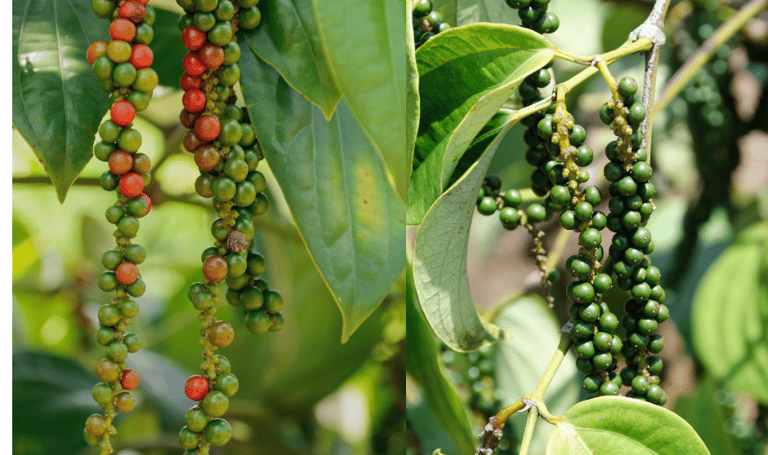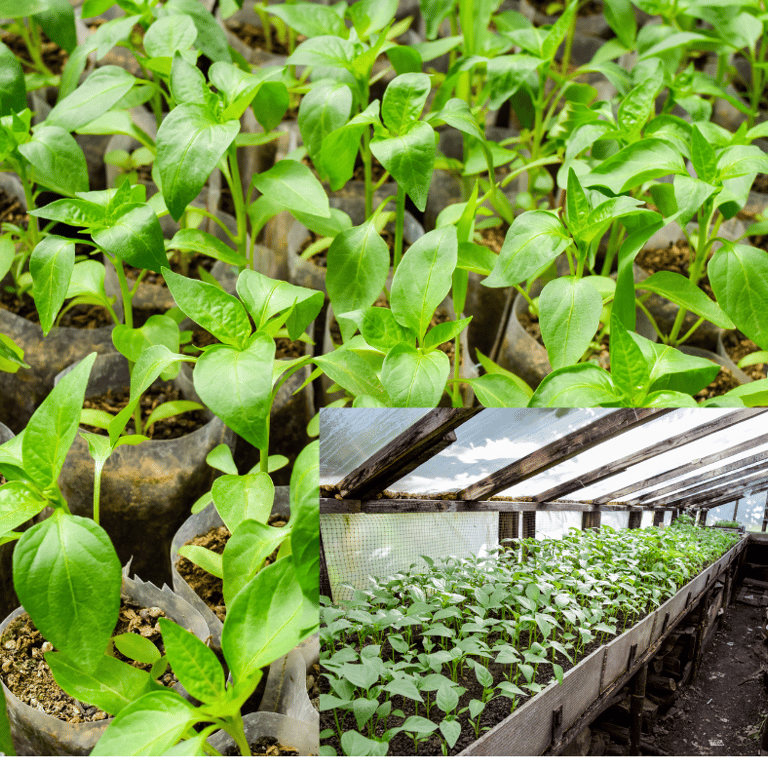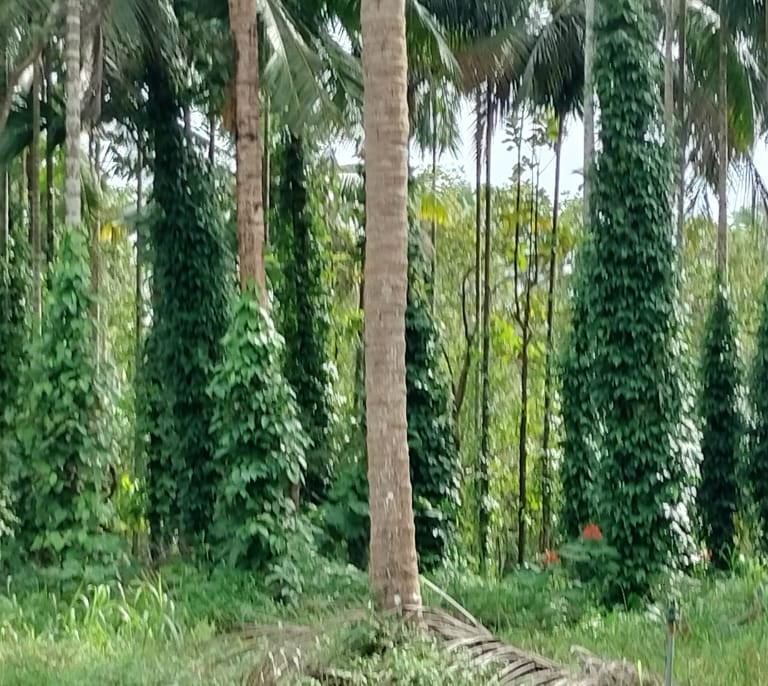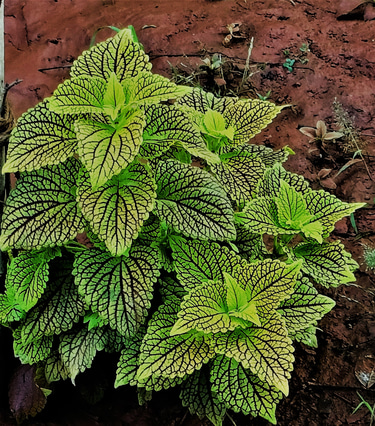Propagation of Black Pepper Vines
There are different ways and means available to propagate black pepper vine. The methods may be traditional or improved. Improved methods like serpentine, rapid multifurcation, trench methods are more popular . Each method has its own steps to be followed meticulously, to have healthy and high yielding propagating materials.
9/19/20245 min read


BLACK PEPPER :
Black pepper is a popular spices worldwide. Along with its culinary use to add flavor and taste, the spice is useful in preparation of pepper oil, perfumes, sausages and others. Botanically pepper is Piper nigrum, belongs to family Piperaceae. Pungency and spiciness of the black pepper is associated with the presence of piperine. The spice is rightly called as 'black gold' as it costlier to afford when compare to any other spices and condiments. Dearness of black pepper may be associated with its worldwide consumption on one hand and restricted production to particular geographic area and climate on the other. Low productivity and growing it as secondary crop is also contributing it scarcity.
In world pepper production, Vietnam, Brazil, Indonesia and India are the leading producers. But the fact is that India is a country with largest area under cultivation, occupying more than 50 % world area, but contributes only 25% production. Kerala occupies around 90% area under cultivation followed by some portion by Karnataka and Tamilnadu.
Propagation of Black Pepper Vines
Black pepper is a perennial woody vine, grows to a height of 30 ft. Main axis of the plant climbs the support with the help of aerial or adventitious roots. The plant is mainly propagated through different vegetative means. Selection of proper shoots are very important for successful and speedy propagation. There exists different kind of lateral shoots and branches produced from main axis or stem. Shoots at the base or ground level, just touching or just above the ground, running right angle to main stem are called runner shoots. Fruiting branches, otherwise called Plagiotropes, are the flower and fruit bearing shoots developed at the nodes of main stem and grow laterally. The thin shoots which are produced from fruiting shoots, and shows tendency to droop down towards the ground, are called hanging shoots or Geotropes. When vertical growth of the main stem suppose to be ceased, it starts producing lateral branches terminally, which are thick and with shorter inter-nodes are called top shoots or Orthotropes.
Traditional Method of Propagation:
In traditional method, runner shoots at the base of healthy and high yielding plants are selected for preparation of cutting. Shoots are cut into pieces with 2 or 3 nodes and leaves are trimmed off. Such cuttings are planted on raised bed or poly bags filled with rooting mix. Care should be taken to keep the cuttings under shade and and to irrigate the nursery regularly. Cutting are ready to transplant in field within 3-4 months.
Serpentine method of propagation:
This is a compound layering kind of propagation. Here, cuttings are raised in poly houses or in any roofed structures or under shade net. The well established rooted cuttings are planted in polythene bags of capacity to hold 500 gm of pulverized soil and allowed to grow as mother plants. As the plants start growing and initiate nodes, small polythene bags, preferably of size 20cm x10 cm, filled with rooting mixture are placed below each node. Nodes are gently pushed inside the rooting medium and allowed to root. Placing the poly bags filled with potting/rooting mix may be continued till the length of 11-12 nodes of each mother plant. Once nodes are rooted properly, inter-nodal portion just after nodes are cut and gently buried inside the potting mix and allowed more rooting and induce leaf buds. Once the cuttings start to root profusely and shoot properly, they are used as individual cutting for further propagation.


Trench or Pit method of propagation
In trench method of propagation, trenches or pits are dug at the dimensions of 2m x 1m x 0.5 m in shaded area. Cuttings of about 10 cm length with leaves intact are prepared by carefully selecting from healthy runner shoots. Cuttings are planted in poly bags filled with sand, soil, manures and coir dust in equal proportions. The polybags planted with cutting are placed in trenches already dug. Trenches are to be protected by covering poly sheets. The pits are watered five times a day by using rose cans and not to forget to keep the trenches closed with poly sheets immediately after watering. Cuttings starts showing root initiation with in a week or two. Once roots starts initiating, frequency of watering may be reduced to 3-4 times a day. Leaves start developing at nodes with in a month period. At the this stage, it is recommended to keep the trenches open for one hour a day to make the cutting to get acclaimed to external environment. With in two to three months periods, cuttings come up with well developed roots and leaves. Such cuttings are taken out from pits and kept under shade and watered twice a day. Thus cuttings are hardened and ready for transplanting in main field with in next few weeks. It is also advised to go for foliar spray of nutrient solutions for better and rapid growth and going for drenching of cuttings at trenches with Copper Oxychloride at the rate of 2g/liter to keep them free from diseases is also advisable.
Rapid Multiplication Method:
Rapid multiplication method is of Shri Lankan Origin. In this method, the trenches are dug with 45 cm depth and 30 cm width and at desired length. Dug trenches are filled with soil, well decomposed FYM and sand in equal proportion. Further, bamboos with required length and with diameter 8-10 cm are taken and spilt into halves keeping their septa intact. In case of non availability of bamboos, PVC pipes of the same diameter can be used by splitting them into halves and introducing artificial septa at regulars intervals similar to that of bamboos. Later, these pipes or bamboos are placed at the angle of 45 degree, reaching the trenches dug, by tying to strong support. At the base of each pipes, a rooted cutting is planted and allowed to grow and allowed to climb up pipes or bamboos. Each septa of the pipes are filled with rooting mix and nodes of the cuttings are gently pressed into it. The process is continued as the cuttings keep growing with fresh nodes and nodes are kept buried in consecutive septa filled with rooting medium. Care is taken to tie the cutting firmly to pipes to avoid falling. Cuttings are to be properly irrigated through out.
When cutting reaches the top of the spilt pipes, the terminal buds are clipped off and are crushed at the height of 3-4 nodes to initiate leaves. This activity is performed when the cuttings attains the age of 3-4 months. Once roots are properly formed and leaves are initiated, the cutting are cut at crushed points. Each rooted portion is carefully cut and removed from rooting mix and planted in poly bag mixed with potting mix and allowed to grow as individual cutting. The poly bags with growing cutting are kept in cool and shady place and to be irrigated regularly.
Vertical Column Method of Propagation
In this method of propagation, vertical columns made up of plastic coated wire mesh. Columns are preferably of 2 m height and 0.3 m diameter. The columns are filled with partially decomposed coir pith and vemi-compost in 1:3 ratio. The mixture may be treated with Trichoderma @ 10gm/kg of mix. 8 to 10 cuttings are plated around each vertical column. The cutting are allowed to grow in such a way that each nodes come in contact with rooting media. With in a four to five month the cutting reaches the top of the column with development of about 20 nodes, some of which develop lateral shoots. By using the method, propagator can get different kinds of individual cutting from each column. Sigle cuttings, cuttings with lateral shoots and individual lateral cutting that can be used for propagation of bush pepper would be available from the same column.
Newsletter
Sign up for our newsletter and get notified about all new posted articles.
ADDRESS
House No. 2-113(P), Visnumurthynagar, Kelarkalabettu, Thenkanidiyuru, Udupi
cONTACT
7975809540
satishmqc362@gmail.com
